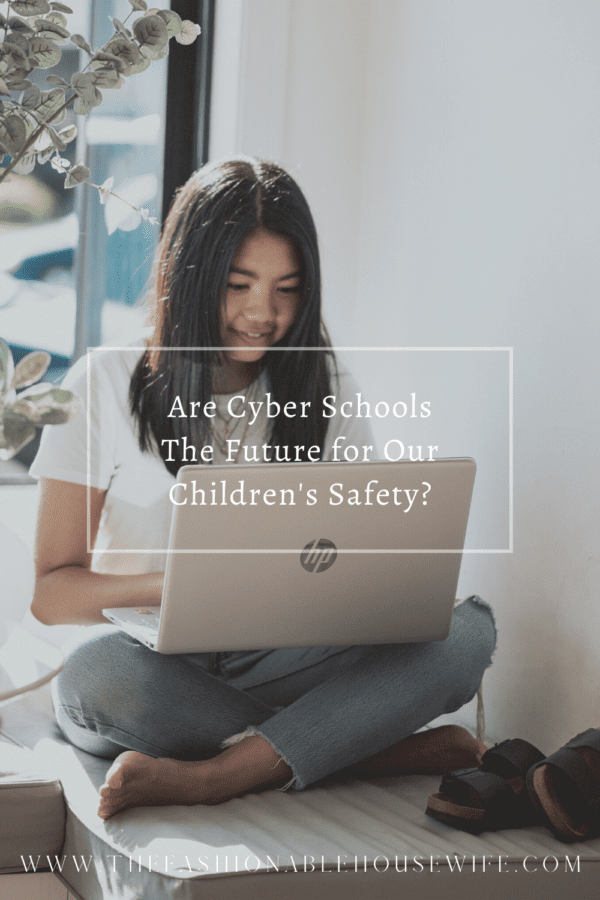
As parents, we want the best for our children. We want to protect them from anything that might harm them physically or emotionally, and we want to give them the best education possible. Unfortunately, many parents now believe traditional schools aren’t equipped to do this, leaving them questioning if cyber schools are the best option for our children’s safety.
Traditional School vs. Cyber School’s Safety Concerns
Online learning isn’t anything new — it’s been around for decades, but the number of cyber school students has increased dramatically in recent years. A significant reason for that shift is parental concerns for safety.
Schools are notorious for bullying and social pressure, and traditional school funding isn’t universal either, leaving many districts at a disadvantage. With increased school violence and the pandemic, it’s worth asking if a brick-and-mortar school is the safest place for our children.
On the other hand, cyber school isn’t without its problems. Cyberbullying, exposure to explicit content and cybersecurity are just a few cyber safety issues. For this route to be an option, kids would need education on conducting themselves wisely on the internet.
Health Safety
When the pandemic shut schools down across the country, learning shifted online. Viruses and bacteria that cause illness are much harder to contain in an in-person environment. Getting students to wear masks or stay home when they don’t feel well falls on parents who aren’t there to watch them all day. Similarly, hand washing is encouraged but can’t truly be enforced or overseen in all circumstances.
Cyber school keeps children in their home environment, which can be as controlled as each family chooses. You can create your own hygiene rules and limit your exposure to others how you see fit.
School Violence
Violence in school is at an all-time high, with mass shootings taking too many innocent lives. On top of that, gang wars pit children against each other and kids are physically and sexually abused by classmates and even teachers.
These issues have led to an increase in the number of students and families seeking protection orders to keep themselves safe. Unfortunately, fighting a protection order can be a complex legal process, requiring to hire a lawyer.
A CDC survey in 2019 found that 9% of high school students had missed at least one day of school out of the last 30 because they felt unsafe at or on the way to school. Schools are doing the best they can with the means they have, but unfortunately, the schools where violence is highest often have low funding.
Bullying and Social Pressure
Bullying is an issue for both traditional and cyber schools — it just might look a bit different. Bullying takes violence to another level since it involves repetitive and persistent acts against the same individual or group. According to UNESCO, 30% of children worldwide have been bullied at some point in their life.
Traditional schools see a mix of in-person bullying and cyberbullying. The most common reasons kids are bullied are their appearance, race and gender, and it can happen anywhere on school property, on the bus or walking to and from school. Physical and sexual violence are much more prevalent in traditional schools than in cyber schools because of the proximity of students. However, cyberbullying is more likely in cyber school due to its online nature.
Cyber Security
For the most part, teachers are well trained to detect instances of cyberbullying but much less adept at teaching kids about cyber security. This issue is more prevalent for students in cyber school since their education takes place entirely online with no in-person interaction with their teachers.
Common forms of cyber attacks on children are phishing scams and domain spoofing. You probably have experience with phishing scams — those emails that look like they’re from someone important, and their goal is to elicit personal information. Domain spoofers will set up websites with very similar domain names to sites your children might frequently use. Except these won’t be secure and will try to get personal information.
Exposure to Inappropriate Content and Predators
Again, exposure to explicit content and other sexual acts happen in traditional schools and cyber schools, but the frequency is higher in cyber schools since everything is online. The internet offers a rare form of anonymity. Kids might feel safe sending each other sexts when hidden behind a computer screen, but bullies can later use those same messages and pictures as blackmail. Predators who are good hackers can also gain access to messages and use them to their advantage.
Also, since your child will probably be using their own laptop rather than a highly secure one from school, they’re more likely to come across adult content on the internet. Traditional schools have security measures in place that eliminate the danger fairly successfully. However, at home, your kids can more easily access off-limits material, either intentionally or accidentally.
Which Is the Best Option?
Ultimately, there’s no option that’s entirely without safety risks. Your job will be to decide which environment you feel best accommodates your child’s safety, which might change between school districts. If your child is old enough, you could ask them about their preference.
Also, while safety is undoubtedly a critical issue, it isn’t the only aspect you should consider when deciding between a brick-and-mortar or cyber school.
- Does your child need special services?
- Is your child interested in the extended course offerings available through online school?
- Will someone be able to stay at home with your child to monitor cyber schooling?
- Does your child participate in activities outside of school that will give them social opportunities?
Ask yourself these questions and more to fully determine if you want to make the switch or not.



